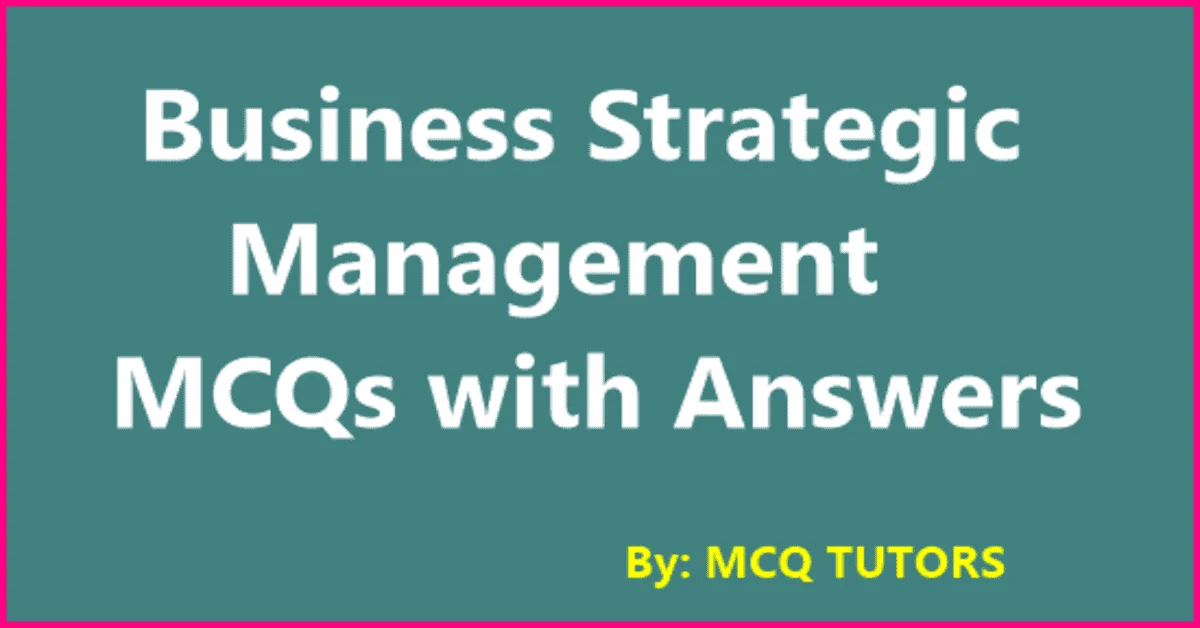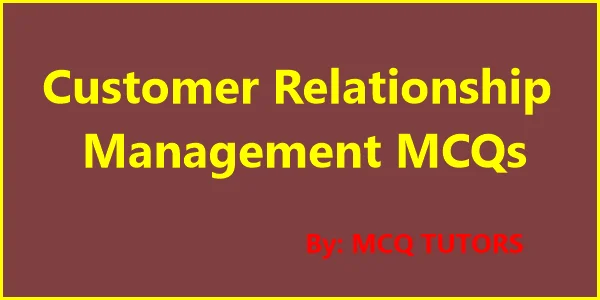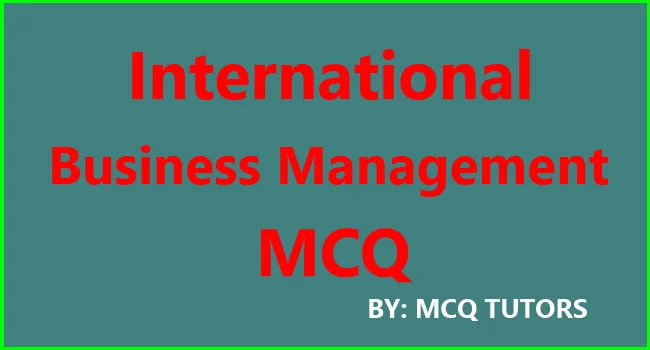Advanced Production Planning and Control is a critical component of any successful business, as it allows companies to efficiently and effectively manage their resources, production processes, and materials. MCQ Advanced Production Planning and Control is an innovative tool that helps organizations to streamline their operations, reduce costs, and improve customer satisfaction.
This article provides an overview of this powerful system, including its features, benefits, and how it can help your business achieve success.
What is Advanced Production Planning and Control
Production control is the function of management that plans, directs, and controls the material supply and processing activities of an enterprise so that specified products are produced in specified ways to meet an approved sales program.
MCQ Advanced Production Planning and Control
1. Normative theory of production is ___ based.
a) Knowledge
b) Application
c) Description
d) Theoretical
Ans. b
2. The technique of making a series of processes or activities, which are required for the production process, in production planning is known as ____.
a) Scheduling
b) Dispatching
c) Planning
d) Routing
Ans. c
3. How many levels of production planning are there?
a) One
b) Two
c) Three
d) Four
Ans. c
4. Which level of production planning is concerned with the transformation of inputs into some desired products?
a) Factory
b) Process
c) Development
d) Operations
Ans. b
5. ____is the list of all the materials required to produce the finished goods.
a) Bill of materials
b) Bill of cost
c) Production list
d) Cost list
Ans. a
6. How many methods of lot sizing are there?
a) One
b) Two
c) Three
d) Four
Ans. c
7. A/An ____ line can be defined as the line with various operations in line.
a) Production
b) Fabrication
c) Process
d) Assembly
Ans. d
8. Which company started the assembly line method for the production of its popular Model T?
a) Toyota
b) Benz
c) Ferrari
d) Ford
Ans. d
9. Which method of line balancing is also known as Ranked Positional Weight (RPW)?
a) Largest Candidate Rule
b) Helgeson and Birnie method
c) Kilbridge and Western method
d) Smallest Candidate Rule
Ans. b
10. In which line balancing method are the elements allocated with regard to their position?
a) Smallest Candidate Rule
b) Helgeson and Birnie method
c) Kilbridge and Western method
d) Largest Candidate Rule
Ans. c
11. Which graph technique is used to schedule and control batch production when there are different points of deliveries?
a) Line of Balance
b) Sight of Balance
c) Line of Sight
d) Line of Batch
Ans. a
12. What type of products does a job shop unit produce?
a) Low Mix and High Volume
b) High Mix and High Volume
c) Low Mix and Low Volume
d) High Mix and Low Volume
Ans. d
13. What kind of workforce is required in job shop production?
a) Average-skilled and intransigent
b) Highly skilled and flexible
c) Highly skilled and intransigent
d) Average-skilled and flexible
Ans. b
14. What is assigning of different jobs to different facilities known as?
a) Assembly loading
b) Fabrication loading
c) Shop loading
d) Resource loading
Ans. c
15. ____ refers to the revision of a production schedule.
a) Lock action
b) Control action
c) Emergency action
d) Process action
Ans. b
16. The N jobs one machine situation is also known as:
a) n/2
b) n/3
c) n/1
d) n
Ans. c
17. The total time required for every order to be completed is known as:
a) Completion time
b) Process time
c) Job time
d) Flow time
Ans. d
18. How many basic elements of cost are there?
a) One
b) Two
c) Three
d) Four
Ans. c
19. Which of the following is not another term for direct labour cost?
a) Chargeable labour
b) Productive labour
c) Process labour
d) Operating labour
Ans. a
20. The expenditures or costs incurred by an organisation in the process of producing goods and services is known as:
a) Total cost
b) Actual cost
c) Direct cost
d) Sunk cost
Ans. b
21. Which type of cost is also known as non-avoidable cost?
a) Actual cost
b) Direct cost
c) Indirect cost
d) Sunk cost
Ans. d
22. Which type of cost is also known as non-traceable cost?
a) Direct cost
b) Total cost
c) Indirect cost
d) Explicit cost
Ans. c
23. In which type of cost control technique is cost reduction done at the manufacturing stage?
a) Kaizen costing
b) Benchmarking
c) Budgeting
d) Just-in-Time (JIT) system
Ans. a
24. JIT system is similar to ____.
a) Budgeting
b) Benchmarking
c) Target costing
d) Standard costing
Ans. c
25. Which of the following documents provides for assembly of the detailed cost of a cost centre or cost unit?
a) Balance sheet
b) Price list
c) Cost sheet
d) Detail sheet
Ans. c
26. The first step in the determination of standard cost is:
a) Setting of standards
b) Establishment of cost centres
c) Authorities for standard setting
d) Classification and codification of accounts
Ans. b
27. How many types of standards are applied to the cost centres?
a) One
b) Two
c) Three
d) Four
Ans. d
28. ___ = Price Standards of direct material × Quantity standards of direct material
a) Standard direct material cost
b) Standard direct labour cost
c) Manufacturing overheads
d) Standard direct process cost
Ans. a
29. Variance can be covered from time to time by what standards?
a) Implicit
b) Explicit
c) Normal
d) Common
Ans. c
30. The difference between planned, budgeted, or standard cost and actual cost is known as:
a) Cost analysis
b) Budget analysis
c) Process analysis
d) Variance analysis
Ans. d
31. Cost variance is subdivided into how many categories?
a) One
b) Two
c) Three
d) Four
Ans. d
32. Material cost variance is calculated by using the formula:
a) MUV = SP (SQ – AQ)
b) MPV = AQ (SP-AP)
c) MUV = AQ (SQ – AQ)
d) MPV = SP (SP – AP)
Ans. d
33. The difference between the standard labour cost of actual hours for actual output and effective actual hours taken by the different classes of workers is known as:
a) Labour Efficiency Variance
b) Labour Mix Variance
c) Labour Yield Variance
d) Labour Idle Time Variance
Ans. b
34. Which of the following concepts is used in S&OP?
a) Short-term process
b) Long-term process
c) Demand and supply
d) Workforce contraction
Ans. c
35. In which approach to S&OP are forecasts developed by one department and followed by other departments?
a) Concentrated approach
b) Consensus approach
c) Efficiency approach
d) Independent approach
Ans. a
36. Which S&OP strategy can also be defined as a method in which resources are altered on the basis of demand?
a) Level strategy
b) Combination strategy
c) Chase strategy
d) Separate strategy
Ans. c
37. Which S&OP strategy is also referred to as a mixed strategy?
a) Level strategy
b) Combination strategy
c) Chase strategy
d) Separate strategy
Ans. b
38. Which of the following is a part of external strategies?
a) Subcontracting
b) Inventory
c) Pricing
d) Temporary workers
Ans. c
39. Which of the following is an internal strategy?
a) Pricing
b) Subcontracting
c) Advertising
d) Package offerings
Ans. b
40, What is the main factor which drives the master schedule?
a) Workforce
b) Production machinery
c) Market demand
d) Supply
Ans. c
41. What is the factor which actually executes the master schedule?
a) Workforce
b) Production machinery
c) Market demand
d) Supply
Ans. a
42. How many time zones are there in a time horizon of master scheduling?
a) Two
b) Three
c) Four
d) Five
Ans. c
43. How many weeks are needed for a master scheduling to be in the firm zone?
a) 1-2
b) 2-4
c) 4-6
d) 6+
Ans. b
44. What is the percentage possibility of change in the master schedule during the full zone?
a) 1%
b) 5%
c) 10%
d) 100%
Ans. c
45. ____ is the point in time where the scheduler is allowed to make changes to the schedule.
a) Demand time fence
b) Planning time fence
c) Supply time fence
d) Process time fence
Ans. b
46. A ___ is generated in a two-level master schedule which has the listing of all the configuration of the product family.
a) Bill of material
b) Product configuration catalogue
c) Demand catalogue
d) Bill of supply
Ans. b
47. Product activity control is divided into priority control and ___.
a) Process control
b) Supply control
c) Demand control
d) Capacity control
Ans. d
48. How many key requirements of the PAC database are there?
a) Two
b) Three
c) Four
d) Five
Ans. d
49. Which file contains the operational data?
a) Work centre file
b) Part master file
c) Routing file
d) Shop order master file
Ans. c
50. Which is the most used file in PAC database?
a) Shop order master file
b) Routing file
c) Part master file
d) Work centre file
Ans. a
Conclusion:
Advanced Production Planning and Control provide organizations with a powerful tool to increase efficiency, reduce costs, and ensure the accuracy of their production operations.
This system utilizes complex algorithms and software to optimize production based on customer demand, inventory levels, and other factors.
The implementation of APPC enables organizations to streamline their production processes for improved results. Moreover, APPC is beneficial not just for current operations but also provides a platform for companies to plan ahead for future growth and expansion.
Read more:
- 4 Best Educational Tools For Student
- MCQ High Speed Networks
- Solved MCQs of Computer Graphics and Multimedia Systems




